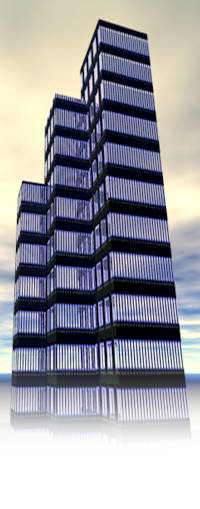|
OK, We Got it Built, Now How Do We Get the Thing to Work, or, Commissioning? What’s Commissioning?
In
the early part of my career, way back before I knew it was going to become a career, I spent 6 months in Albany (Albinee
as the locals say it), Georgia, as an Electrical Draftsman/Designer/ Modelmaker, working for Bechtel at a Procter & Gamble
paper mill which produced Charmin toilet tissue. We were in the midst of PSI (Pre Startup Inspection) after modification
of one of the paper machines to allow it to spit out product at the rate of 5000 feet per minute, or, for the imagination-challenged
among you, nearly 60 miles an hour.
A
paper machine is about the size of two or three ranch houses end-to-end, and is basically a huge belt of window screen material
stretched atop what would be the roofs of the ranch houses, with goop (slurry)
continuously dripped across the screen at one end, having suction and heat applied beneath the screen as driving rollers and
sprockets inside the screen belt had the whole mess flying toward the other end at the aforementioned 60 mph, where a really
large blade got between the paper (or, in this case, tissue) and the screen, and the stuff got wound around rollers
which were removed and then taken to another machine for unwinding, cutting, and rewinding on to rolls you and I can use personally.
The
trick here was that at anything faster than 30-40 mph or so, the product (web)
wanted to fly off of the screen and break as it dried into tissue or paper, so the machine designers and process folks got
together and came up with something called a twin-wire conversion to allow us to get the machine up to 60 mph.
This
was an affair where a second belt rode atop the existing belt, and the Headbox spilled the slurry out between the two screens (wires) with the
product firmly sandwiched between the two wires as it dried.
I
was only designing and modeling DC drive cabinets and high capacity medium voltage cablebus in those days to provide power
to the huge (thousands of horsepower) electric motors that powered the machine, and I worked with engineers responsible for
making the thing function, whom I’d seen on more than one occasion to be bleary-eyed after an all-nighter trying to
get the control system to behave.
You see, a paper machine, just like something as seemingly mundane as a central air conditioning system, is a complex
construct trying to deliver a predictable and repeatable output in the face of an almost stochastically dynamic environment.
. . . Wha?
Not
a lot of things have to line up correctly to turn on a light, for example. Squeezable Charmin and a comfortable artificial
environment are, however, an entirely different matter. Similarly, to light a burner on a gas range, you merely turn
a knob and (maybe) light a match. To light off a marine boiler is something more of an undertaking.
So
who’s the rocket scientist who convinced Design Professionals that all they had to do was to produce a good set of design
documents, and also convinced Installing Mechanics that all they needed to do was to ignore such documents as they were obviously
prepared by persons who had no acquaintance with the real world? Or, as I have been known to cry on occasion in exasperation,
Perché mé Dio? (Why me God?)
What
is so bloody tough to figure out about this? Doesn’t anybody remember that the Design Professions started out
as a part of the Construction Trades?
We
in the Design Professions have come to realize this of late, and have come up with a new term (Commissioning) for this old
process of getting the thing to work, which Bechtel called PSI. It was called similar things by others in the Design-Build
crowd, and even we in the Design-Bid-Award crowd insist upon submittals, shop drawings, final field tests, and final testing
and balancing, before we “sign off” a project.
The
problem has become, as is not infrequently the case in specialized advanced society, the legal framework in which we exist
has become an excuse for some to be more concerned with limiting their legal exposure by shifting responsibility to others
and relying on documentation of that responsibility having been discharged, as proof of a system functioning as intended.
Years
ago, I gave up on accepting balancing reports where I didn’t personally oversee the testing because I kept getting called
back with end user complaints and discovered conditions in the field which made the balancing reports look like fiction.
Understand this occurred weeks after project closeout, not after the decades of poor or no maintenance which has led to the
new locution “Retro-Commissioning.”
Whether such balancing report novellas were the result of incompetence, a desire to cut corners, or a desire to please and
for all to get along, is unimportant. What is important is that the thing ended up not working as intended, and everyone
ended up looking bad.
And
the owner/end user in all of this? He/She still doesn’t understand why an air conditioning system shouldn’t
work like a light bulb or a burner on a gas range.
Do
you suppose we might have missed something?
Next Issue
|
